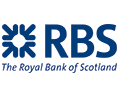Applying “If-Then” Logic to Your Trading Strategy
Every forex trader has been there, caught in the heat of the moment, trying to decide whether to buy, sell, or sit still. Emotions kick in, second-guessing takes over, and before you know it, you’ve exited too early or entered too late.
One way to avoid this? Use “if-then” logic.
In this article, we’ll break down how applying “if-then” statements to your forex trading strategy can help you stay consistent, reduce emotional decision-making, and trade smarter, especially in fast-moving markets like the ones Nigerian traders often navigate.

What is “If-Then” Logic in Trading?
At its core, “if-then” logic is a simple decision-making rule:
If X condition is met, then I will take Y action.
It removes guesswork and helps you define your trading moves before you face them in real time. This is the backbone of any solid trading plan, especially useful when volatility spikes or when markets act unpredictably.
Examples of “If-Then” Logic in Action
Let’s say you’re watching the EUR/USD pair:
- If the price breaks above 1.0800 with strong volume, then I will enter a long position.
- If RSI crosses above 70 on the 4h chart, then I will wait for a pullback before entering.
- If my trade goes 50 pips in profit, then I will move my stop-loss to break-even.
Each of these rules builds structure into your trading, allowing you to act with intention instead of impulse.
Why “If-Then” Works for Nigerian Traders
For many Nigerian traders, market conditions are not just numbers on a screen, they’re tied to real currency value and economic pressure. That makes emotional trading even riskier.
By using “if-then” logic, you:
- Protect your capital in a high-inflation environment.
- Trade more confidently despite market noise or unexpected news.
- Build a routine which helps whether you’re trading part-time or professionally.
How to Build “If-Then” Rules Into Your Strategy
Here’s how to start applying it today:
1. Define Your Setups
Decide what market conditions must be met before you act. Use technical indicators like moving averages, support/resistance, or candlestick patterns.
If EUR/NGN bounces off a key support level after an economic report, then I will look for a bullish confirmation.
2. Set Entry & Exit Rules
Don’t wing it—be specific.
If the trade goes 30 pips against me, then I will exit immediately.
If price hits my first profit target, then I will close half and let the rest ride.
3. Include Risk Management
Tie your risk limits to each action.
If the risk-to-reward ratio is less than 1:2, then I won’t take the trade.
4. Test and Adjust
Use a demo account on FXCG to test your if-then logic without risk. Adjust your rules based on performance before going live.
Why It Works Better with FXCG
With tight raw spreads, ECN execution, and low latency, FXCG provides the kind of trading environment where “if-then” logic thrives. Your rules execute faster and cleaner, without the frustration of slippage or platform lag.
Plus, with MT4 support and flexible account types, you can easily program your “if-then” logic into custom indicators or Expert Advisors (EAS).
Final Thought: Rules Over Reactions
The more rules you follow, the fewer regrets you’ll have. Applying “if-then” logic to your trading strategy is not just about avoiding losses; it’s about building consistency. And in the forex world, consistency beats emotion every time.
Ready to start trading smarter? Open a demo or live account with FXCG today and put your new “if-then” rules to the test.


















